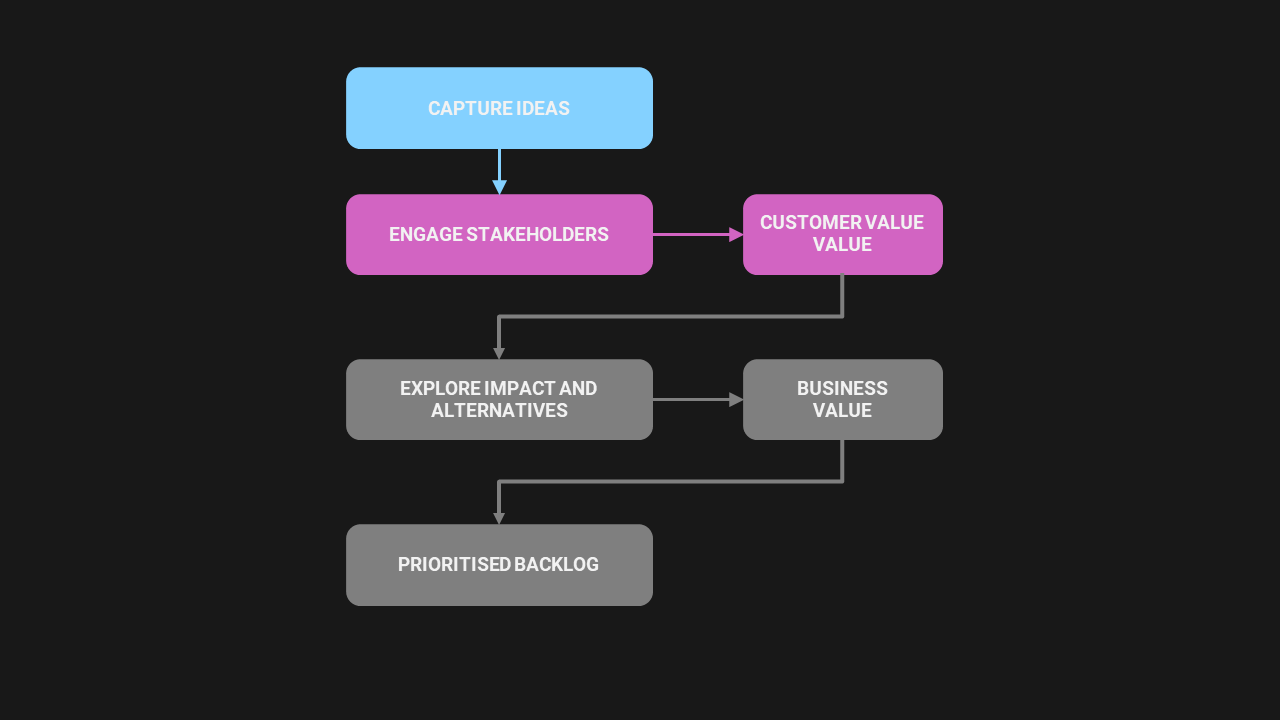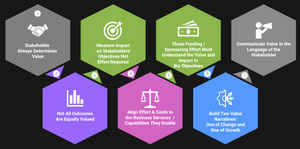Introduction
In "Is your idea management system helping you create impact and ship value?" we explored the importance of running a professional idea management system within a Digital Business.
However, to professionally capture ideas, you need a standardised mechanism for you and your team to:
- Ensure consistent communication with the people that matter.
- Understand what customers are trying to achieve.
- Explore options and alternatives.
- Evaluate what value means to the impacted stakeholders.
In this post, we outline a playbook you can use to
- Unpack what it takes to achieve actionable clarity around work requests.
- Create a framework for you and your team to be better at capturing work requests.
- Capture additional data points in a structured manner to help you map requests to business value and impact.
Let's go!.
Step 1: Identify the sources of ideas/requests you use today
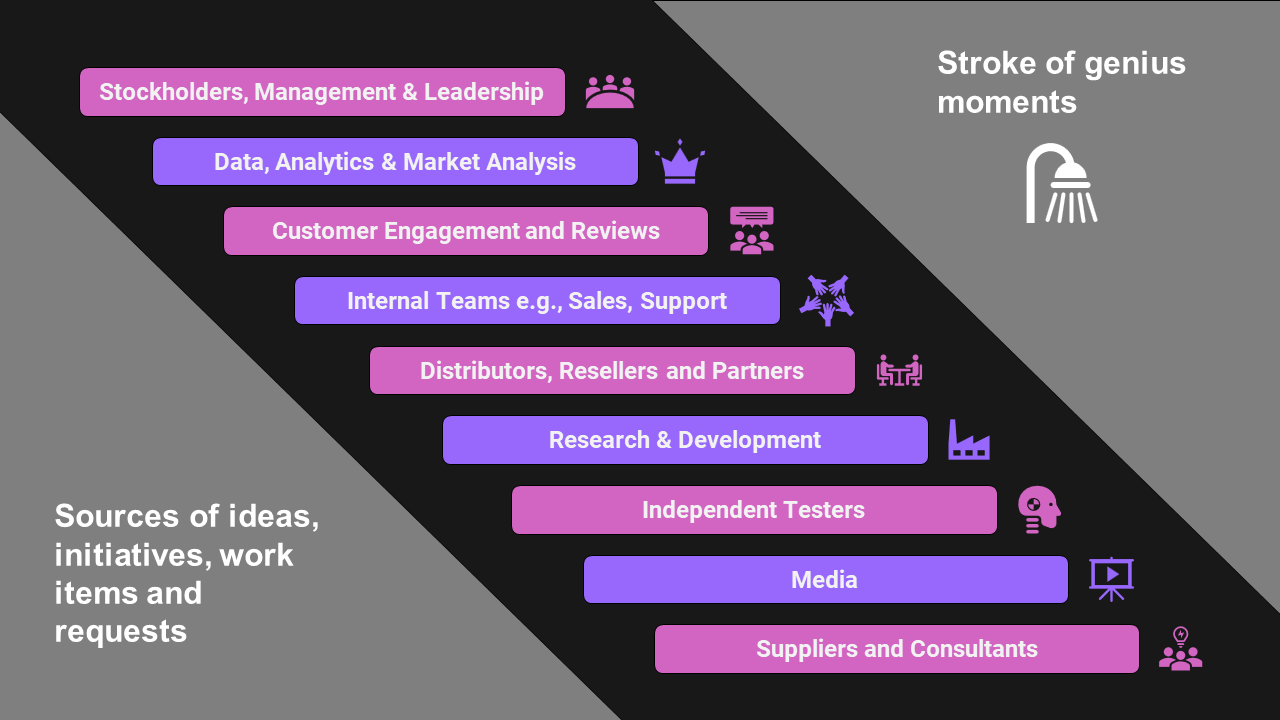
Understand which sources you and your teams will consistently use to understand work requests.
And remember, to always be ready to handle conflicts across requests:
- Customers expect new ways to work with the product.
- Business Leadership and Board members push for some feature they believe will help reach a new market or objective.
- Technical support requests priority fixes and capabilities that will make their job easier.
- Marketing positioning for better in-product messaging.
- Sales demanding works for new features to stand out against the competition.
- Delivery suggests significant architectural changes to improve the supportability and quality of the product.
- Your personal bias and opinion.
- New legal and de-risking requirements.
- Operations driving integration initiatives to automate capabilities for 24/7/365 services.
- Etc.
Step 2: Determine which sources to keep/drop/engage tomorrow

With your team, discuss and decide which sources:
- Are most willing to provide meaningful and actionable feedback?
- Provide most value?
- Should be used more?
- May need to be reduced?
- Can be better served through 1:1 stakeholder interactions.
- Can provide better, more meaningful engagements using digital means.
Step 3: Ensure all of your team commit to engaging core sources and stakeholders identified in Step 2
Unless managed, you will find different people use different sources of inputs. They will naturally drift towards the references and information they are most familiar with and comfortable using.
This drift creates unevenness in the range of inputs. You must push yourself and your teams to ensure your inputs span consistently across the entire range of sources. While this creates a potential issue of overload, it also offers a voice to that stakeholder that would not know you are receptive to their input, and even better, value their input.
Ensure that ALL of your team are using:
- the same sources, or
- a similar set of inputs as agreed with you in advance for the products they manage.
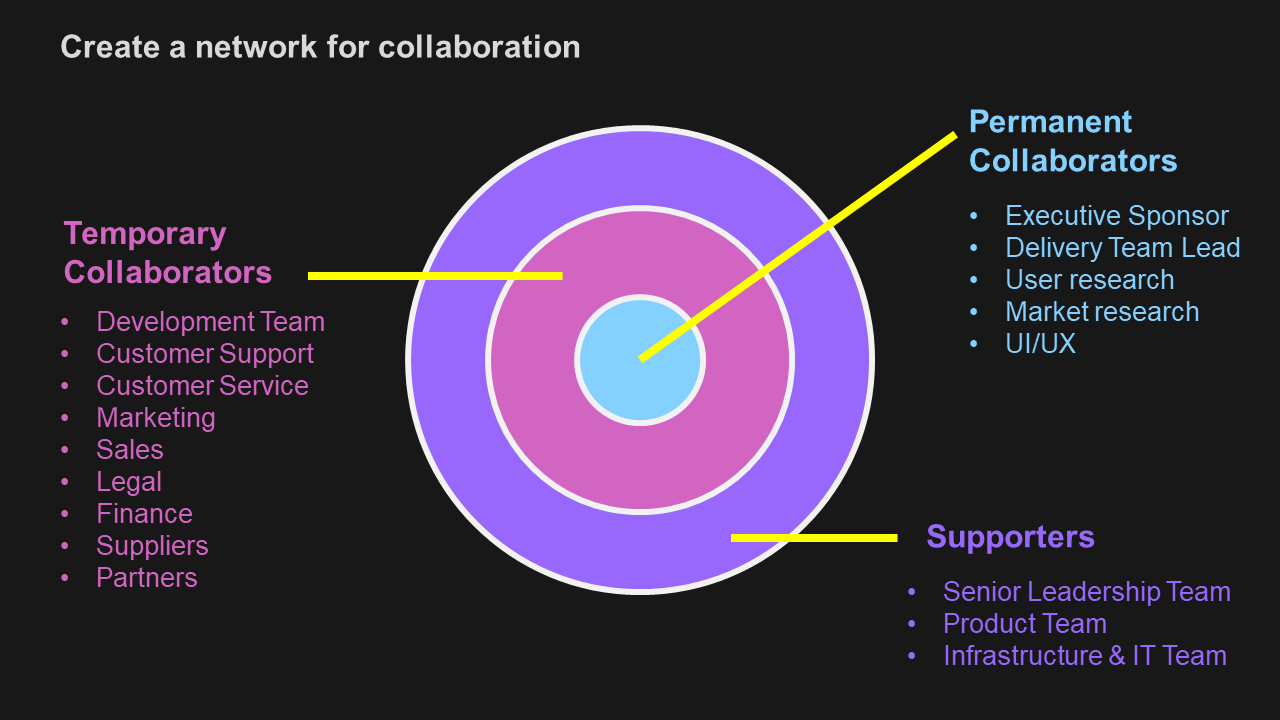
It is crucial to continually re-enforce the message of diversity, and its positive impact on:
- De-risking from decision bias.
- Assuring stakeholders with a consistent manner of voicing and discussing feedback.
- Increasing cross-functional team confidence in the decision making process.
Step 4: Make it easy
Ensure people can initiate work requests and share notes easily.
"Communication with you must be effortless."
Once a new request is shared or initiated:
- It is crucial to confirm the receipt of their request.
- Provide an initial reaction and triage/reaction to that request, i.e. take a genuine interest.
The purpose of this step is to ensure that you are identified as a contact that is:
- Reachable.
- Accessible.
- Agile in reacting to new information with empathy.
The success of this step is measured by the ease and willingness of people to engage with you. This ease of engagement is built through action and past experiences once they feel you:
- Heard and were receptive to their requests.
- Serviced their request with the intent to resolve it with reasonable effort.
- Listen to their additional ideas and provided feedback on what can be achieved/not.
- Involved them in exploring alternative options.
“Better Communication, Better Results. Period”
Start small while providing superior engagement experiences with email and chat. Communicate openly and verbosely. Make it for people to take interest and understand:
- The best venues to engage with you.
- The expected response times.
- Your next steps.
NOTE: In a high-transaction or high-volume request business, this may not be sustainable. In such situations, you may need to accelerate the upgrade of your tooling to better service and engage stakeholders. As you expand your velocity and range of engagement, expand the capabilities of your tooling for:


“Include the URLs needed to reach you to discuss ideas at the footer of your email signature. “

The critical part of this step is about you and your team being responsive to requests. I am not talking about resolution to requests. This step is all about successfully enabling swift and agile communication:
- engaging people with purpose, using a set workflow that all members of your team can repeat.
- Enhanced and supported by digital tooling helping you remember key commitments and keep people in the loop on what is happening and when.
“Always be open and always stay responsive.”
Step 5: Systematically explore the customer value of the work request
Once the work request is noted, schedule time and effort to expand your understanding of the context, urgency, and business value that work can unlock.
Try to summarise your understanding of the request, and feel free to
- Send back your summary of the request to the requestor
- Schedule time with the requester to discover more aspects of the request.
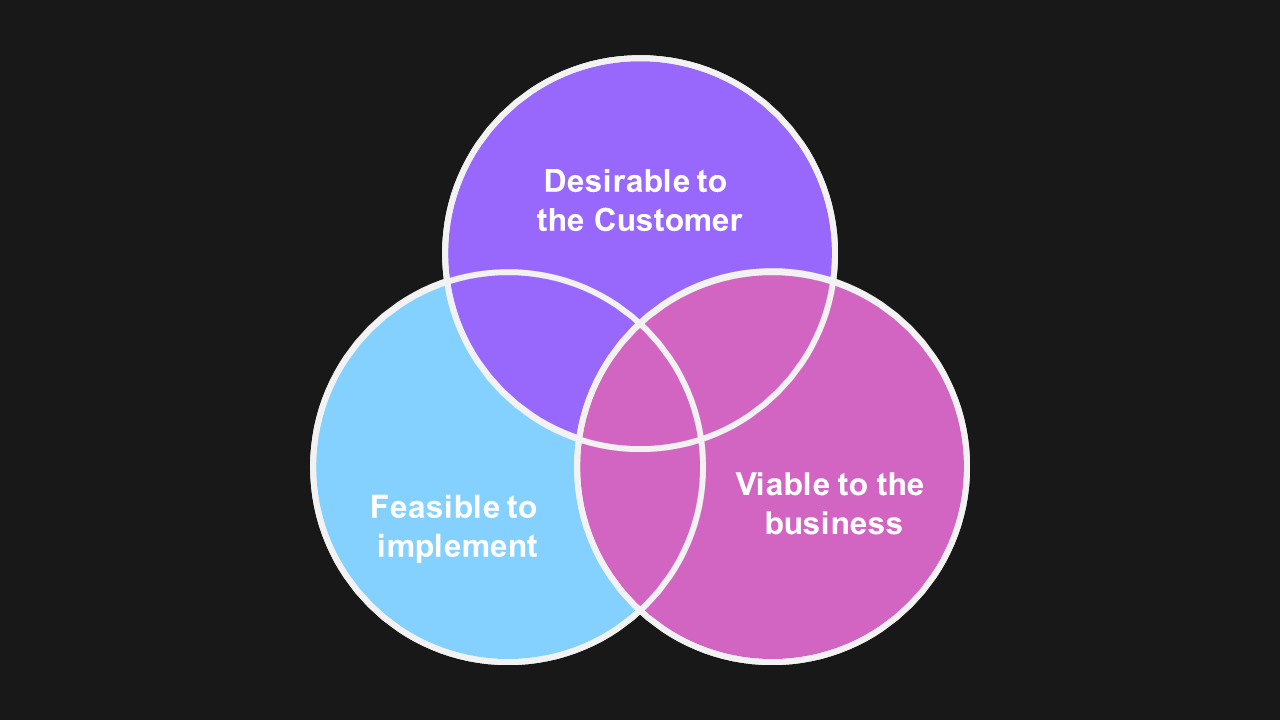
Typical questions I find helpful for this step:
- This is what I understand from this request. Is this correct?
- What led you to request it?
- What challenges does its absence cause you or your team?
- What would an ideal solution look like?
- How will this capability be used?
- How does this capability align with the purpose of your team and the business?
- How do you envisage to access this capability, and from where?
- In the absence of such a capability, what is your current workaround?
- Why is the request important to you? i.e. if implemented, who would it enable and how?
- To implement this, it would require [fill in your initial sense of effort]. Do you still hold this capability is worth this effort?
- How does this request compare to the other request(s) in the Backlog?
- Do you need to engage a broader audience and decision-makers?
- What challenges do you think we can meet? (legal, operational, transformational, budget?)
- What is the KPI or OKR that it will impact?
- Would you like to take more time to think about the aspects we discussed and come back with a more precise ask?
- Etc.

NOTE: These questions are
- Designed to build rapport and provide a collaborative space that enables people to discuss and explore requests as business peers.
- Enable framing and refinement of the request to meet reasonable asks.
- Meant to be unstructured to enable discussion, engagement and exploration.
- Depend on you to be heavily operating in listening mode, identifying key replies and data points to use to map to aspects of business impact and business value.
Next Steps
Use these playbooks to modernise your systems of work and be a badass at engaging stakeholders, exploring ideas and customer value. Remember that the output of a process acts as an input to another process. Now that you are articulate about the customer value of a work request, you are enabled to properly analyse it from a point of view of the business i.e. cost and value return. Equipped with this information you will be able to decide on how to proceed and advance i.e.:
- Park the idea
- Investigate further with extended collaborator buy-in
- Proceed to prioritisation for implementation
